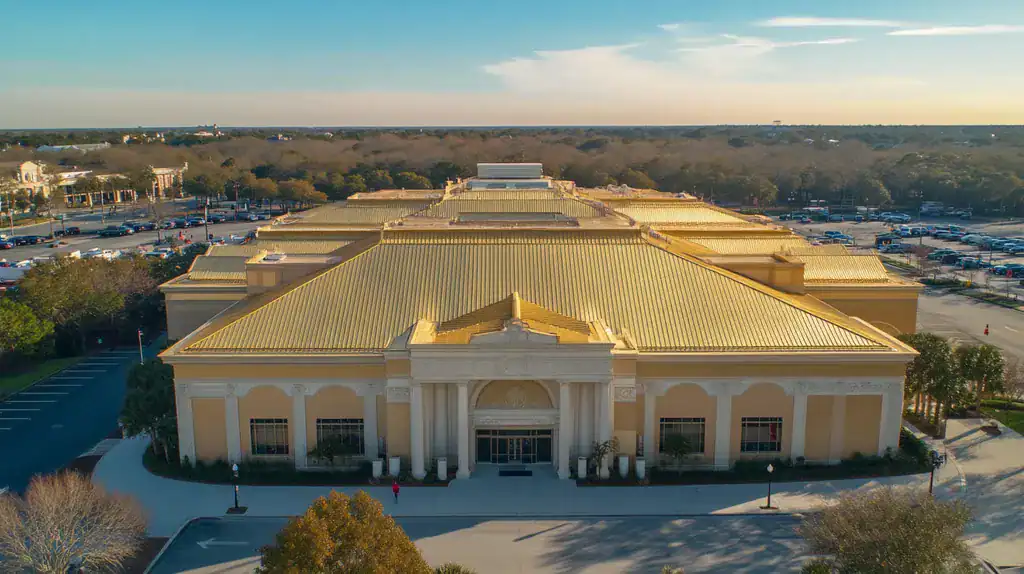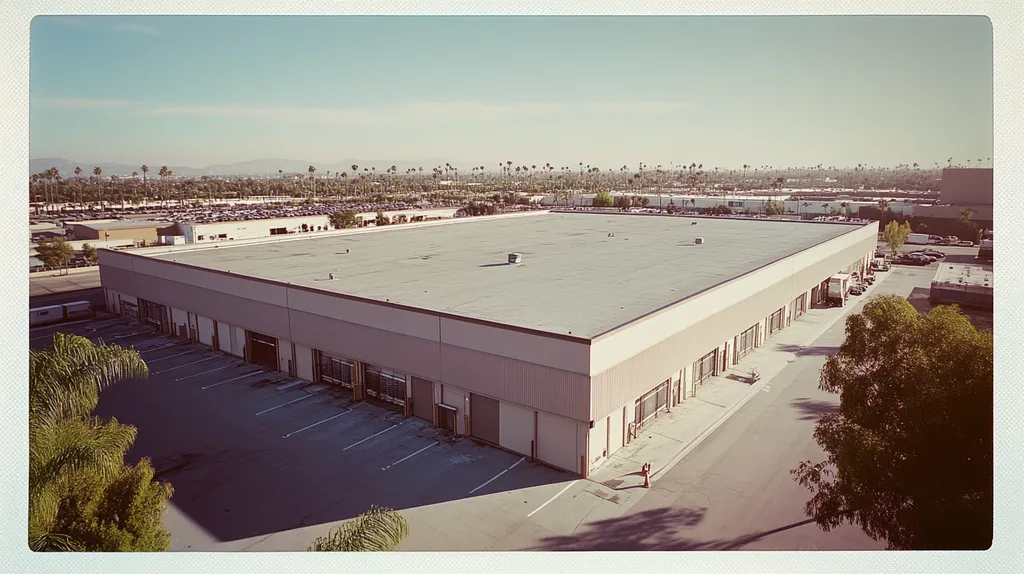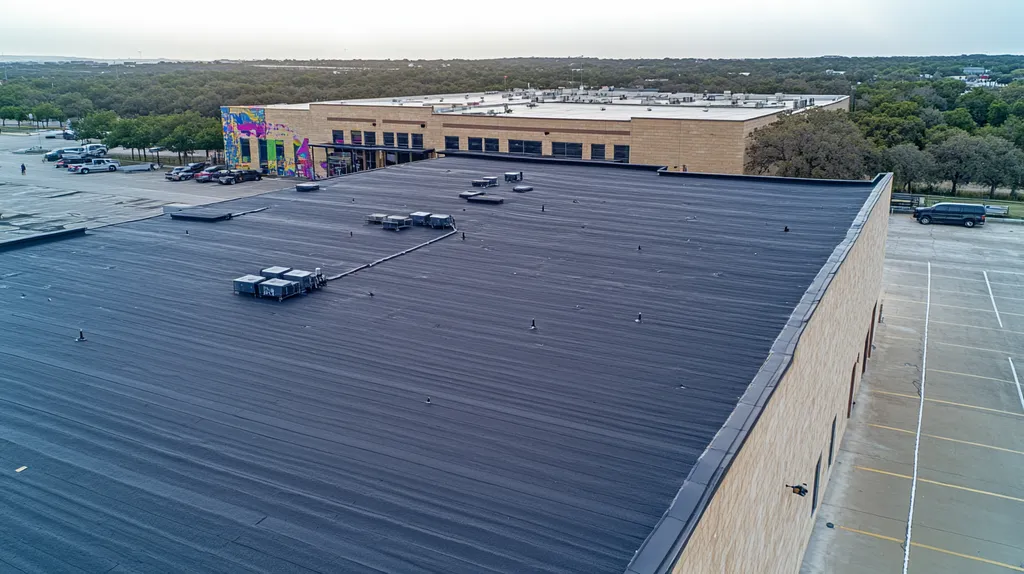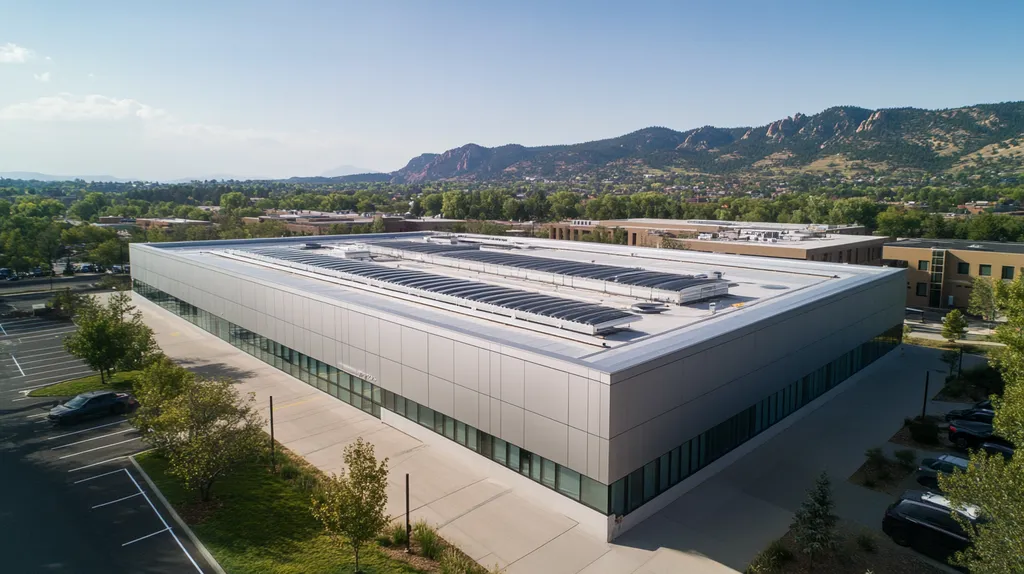Each year, commercial property owners face millions in fines and repairs due to roofing installations that fail to meet local building codes. Recent industry data shows that 65% of commercial roof failures stem directly from regulatory non-compliance.
From material specifications to installation methods, navigating the complex web of local regulations presents a critical challenge for property owners and facility managers.
This comprehensive guide examines the key regulatory requirements affecting commercial roof installations, providing actionable insights for ensuring code compliance while optimizing project costs and timelines.
SECTION 1: FUNDAMENTAL CONCEPTS
Every year, thousands of commercial roofing projects face costly delays and rework due to regulatory non-compliance. Recent data shows that inadequate understanding of local building codes leads to an average project delay of 6-8 weeks and cost overruns exceeding 25%. These challenges affect not just construction timelines but also building safety, insurance coverage, and long-term maintenance costs.
Overview of Local Building Codes and Regulations
Local building codes establish the fundamental framework for commercial roofing projects. These regulations determine everything from material specifications to installation methods, ensuring buildings meet essential safety and performance standards.
Modern building codes reflect both historical lessons and emerging challenges. While the International Building Code (IBC) provides baseline requirements, local jurisdictions often add specific provisions based on regional conditions.
Climate considerations significantly influence these regulations. Coastal regions mandate enhanced wind resistance specifications, while snow-prone areas require additional structural support calculations.
Regular code updates mean that what was compliant five years ago may not meet current standards. Property owners must verify requirements before any roofing work begins, as grandfather clauses don’t always apply to major renovations.
Key Compliance Requirements for Commercial Roofs
Skylights and roof attachments demand particular attention in commercial installations. These components must be designed for specific wind speeds and provide adequate uplift resistance with appropriate safety factors while meeting strict air and water infiltration standards. (source: Insurance Institute for Business & Home Safety)
Fire resistance ratings represent another critical compliance area. Local codes specify minimum ratings based on building occupancy, proximity to other structures, and intended use.
Energy efficiency requirements continue to evolve rapidly. Many jurisdictions now mandate specific R-values and solar reflectance indices for commercial roofing systems.
Drainage calculations must account for local rainfall intensity data. Proper sizing of gutters, scuppers, and internal drains helps prevent structural overload during severe weather events.
Variations in Regulations Across U.S. Jurisdictions
Regional climate patterns drive significant variations in roofing requirements. Northern states emphasize snow load capacity, while southeastern jurisdictions focus on hurricane resistance.
Urban areas typically enforce stricter regulations than rural locations. Cities often add requirements for green roofing systems, solar readiness, and stormwater management.
Historic districts present unique challenges with specific material and appearance requirements. These regulations may limit modern material options, requiring specialized solutions that balance preservation with performance.
Coastal zones implement additional protective measures. These areas frequently require enhanced fastening systems, corrosion-resistant materials, and specific edge metal profiles.
Mountain regions face distinct challenges related to altitude and extreme temperature variations. These locations often mandate specific underlayment requirements and enhanced ice dam protection measures.
SECTION 2: SYSTEM COMPONENTS
Commercial roofing system components must meet increasingly stringent regulatory requirements across jurisdictions. Recent analyses show that over 40% of roofing project delays stem from components that fail to meet local codes. Understanding and selecting compliant materials isn’t just about following rules – it’s about protecting substantial investments and ensuring occupant safety while avoiding costly rework and potential liability.
Approved Roofing Materials and Fire Resistance Standards
Fire resistance ratings form the cornerstone of roofing material regulations, with requirements varying based on building use and location. Class A, B, and C ratings determine where specific materials can be used, with many urban areas now mandating Class A materials exclusively.
Material testing and certification must follow standardized procedures to ensure compliance. This includes evaluating flame spread, burn-through resistance, and ember protection capabilities.
Local jurisdictions frequently update their approved materials lists based on performance data and emerging safety concerns. What was acceptable last year may no longer meet current standards.
Insurance carriers often impose additional material requirements beyond local codes. Non-compliance can void coverage or significantly increase premiums.
Structural Load Considerations and Code Compliance
Commercial roofing systems must meet specific load requirements that account for both dead loads (permanent weight) and live loads (temporary weight). These calculations must incorporate Federal Emergency Management Agency guidelines for disaster mitigation and resilience. (source: Federal Emergency Management Agency)
Structural analysis must account for equipment weight, including HVAC units, solar panels, and maintenance access requirements. Even seemingly minor additions can impact overall load calculations.
Wind uplift resistance requirements vary by building height and location. Edge zones and corners typically require enhanced attachment methods to prevent system failure.
Seismic considerations affect both material selection and attachment methods in many regions. These requirements can limit viable system options significantly.
Impact of Local Climate on Material Selection
Climate zones directly influence which roofing systems meet local code requirements. Hot regions often mandate minimum solar reflectance values, while cold climates require specific thermal resistance ratings.
Moisture exposure regulations vary by location, affecting membrane thickness requirements and seam specifications. Areas with high rainfall or frequent storms typically require enhanced drainage capacity.
Temperature fluctuation ranges determine acceptable expansion joint spacing and material transition details. Systems must accommodate thermal movement without compromising waterproofing integrity.
UV exposure levels impact material durability requirements and warranty terms. High-altitude locations often require specialized formulations to prevent premature degradation.
SECTION 3: IMPLEMENTATION METHODS
Every year, thousands of commercial roofing projects face costly delays and penalties due to improper implementation methods. Recent industry data shows that non-compliant installations can increase project costs by up to 40% through rework, fines, and schedule delays. Understanding proper implementation methods isn’t just about following rules – it’s about protecting substantial investments while ensuring building safety and longevity.
Permitting Processes and Required Documentation
Local building departments require specific documentation before issuing roofing permits. These typically include detailed project plans, material specifications, structural calculations, and proof of contractor licensing.
Many jurisdictions now mandate digital submission systems with strict formatting requirements. Understanding these systems and their specific documentation standards helps prevent permit rejection and project delays.
Permit review timelines vary significantly by location and project scope. Urban areas often require multiple departmental reviews, while rural jurisdictions may have streamlined processes.
Environmental impact assessments are increasingly common requirements, especially for projects exceeding certain square footage thresholds. These assessments must address stormwater management, material recycling plans, and potential hazardous material handling.
Code-Compliant Installation Techniques
Commercial roofing installations must meet specific performance standards for wind resistance, fire safety, and structural integrity. Proper underlayment installation and skylight mounting techniques are particularly critical for ensuring long-term performance and code compliance.
Installation methods must account for regional weather patterns and potential extreme events. This includes using appropriate polymer-modified bitumen underlayment and installing skylights that meet specific wind speed and impact resistance standards. (source: Insurance Institute for Business & Home Safety)
Seam construction and flashing details require particular attention in commercial applications. Proper technique ensures water tightness while meeting fire resistance requirements.
Quality control documentation during installation helps verify compliance. This includes photographic evidence of proper material application and testing results for critical components.
Collaboration with Licensed Roofing Professionals
Working with licensed professionals ensures proper navigation of complex regulatory requirements. These experts maintain current knowledge of local codes and installation standards while carrying appropriate insurance coverage.
Professional contractors maintain relationships with local building officials, often expediting permit processes. Their familiarity with inspection requirements helps prevent common compliance issues.
Licensed professionals understand material compatibility and system warranties. This knowledge prevents installation errors that could void manufacturer guarantees or create future maintenance issues.
Regular communication between property owners and roofing professionals helps track project milestones and address potential concerns early. This collaboration ensures smooth project execution while maintaining regulatory compliance.
SECTION 4: MAINTENANCE REQUIREMENTS
Regulatory compliance in commercial roof maintenance has become increasingly critical, with recent data showing that 85% of premature roof failures stem from inadequate maintenance practices. Building owners face potential fines exceeding $50,000 for non-compliance with local maintenance requirements. Understanding and following these regulations isn’t just about avoiding penalties – it’s about protecting valuable assets and ensuring occupant safety.
Mandatory Inspection Frequencies and Protocols
Local regulations typically mandate bi-annual comprehensive roof inspections, with additional assessments required after severe weather events. These inspections must follow specific protocols that evaluate membrane integrity, drainage systems, and attachment points.
Regular inspections must verify that roofing systems maintain compliance with air and water infiltration requirements, particularly around penetrations and flashings. Special attention must focus on ensuring the continued integrity of underlayment systems and their adherence to installation standards.
Inspection protocols require systematic documentation of all findings, including photographic evidence of potential compliance issues. These records serve as critical documentation for both regulatory compliance and warranty maintenance.
Many jurisdictions require certified professionals to conduct these inspections, ensuring proper evaluation against current code requirements. Certification requirements vary by location but generally mandate specific training and licensing.
Addressing Code-Mandated Repair and Replacement
Building codes establish specific thresholds for mandatory repairs based on the type and extent of damage observed. Once these thresholds are reached, property owners must initiate repairs within designated timeframes to maintain compliance.
Repair specifications must meet or exceed current code requirements, regardless of when the original roof was installed. This often necessitates upgrading components to achieve compliance with newer standards.
Local regulations require that all repair materials and installation methods meet specific performance criteria for wind resistance, fire safety, and water infiltration. Material compatibility with existing systems must be verified to prevent premature failure.
Emergency repair protocols must be established to address sudden damage while maintaining code compliance. These procedures should outline temporary measures that meet minimum safety requirements until permanent repairs can be completed.
Documentation and Reporting for Compliance
Property owners must maintain detailed maintenance records demonstrating ongoing compliance with local regulations. These records should include inspection reports, repair documentation, and verification of proper material installation. (source: Insurance Institute for Business & Home Safety)
Documentation requirements extend beyond basic repair records to include material testing data, contractor certifications, and verification of proper installation methods. Digital record-keeping systems help ensure accessibility during regulatory audits.
Regular compliance reports must be filed with local building departments according to established schedules. These submissions typically include updates on maintenance activities, repair status, and planned improvements.
Building owners must retain these records for specified periods, often extending beyond warranty terms. Proper documentation provides critical protection during insurance claims and liability disputes.
SECTION 5: PERFORMANCE METRICS
Performance metrics in commercial roofing have become increasingly critical, with recent industry data showing that 40% of roof failures occur due to inadequate performance validation. These failures result in an average of $180,000 in damage per incident, not including business interruption costs. Understanding and properly measuring key metrics isn’t just about meeting codes – it’s about protecting massive investments and ensuring occupant safety.
Measuring Compliance with Fire and Wind Resistance
Fire and wind resistance testing must follow rigorous protocols to ensure compliance with local building codes. These standards establish minimum performance thresholds that vary based on building location, height, and occupancy type.
Skylights and roof attachments require specific design considerations for wind resistance, with testing procedures following strict ASTM protocols for air and water infiltration. In hurricane-prone regions, additional impact resistance testing becomes mandatory to verify system integrity during extreme weather events. (source: Insurance Institute for Business & Home Safety)
Performance validation requires ongoing monitoring and documentation. Regular testing ensures systems maintain their rated resistance levels throughout their service life.
Wind uplift testing must account for building height, exposure category, and roof zone location. Edge and corner zones typically require enhanced testing protocols due to increased stress.
Evaluating Roof Durability Under Local Code Criteria
Durability metrics focus on system longevity under specific environmental conditions. These assessments must consider local weather patterns, chemical exposure risks, and anticipated maintenance practices.
Material compatibility testing prevents premature system failure. This includes evaluating chemical reactions between different components and verifying long-term adhesion performance.
Structural movement accommodation requires specific testing protocols. Systems must demonstrate flexibility without compromising water-tightness or fire resistance ratings.
Impact resistance testing becomes critical in regions prone to hail or falling debris. These tests must verify both immediate damage resistance and long-term performance after impact events.
Energy Efficiency Standards and Verification
Energy performance metrics increasingly drive roofing decisions, with many jurisdictions mandating specific thermal resistance values. These requirements often exceed national standards to address local climate conditions.
Solar reflectance testing must follow standardized procedures to verify compliance. Results directly impact building energy consumption and urban heat island mitigation efforts.
Thermal imaging verification helps identify potential efficiency losses. Regular scans detect insulation gaps, moisture infiltration, and other issues affecting energy performance.
Air barrier testing ensures the roofing system maintains its specified efficiency ratings. This becomes particularly critical where mechanical equipment penetrations could compromise system performance.
SECTION 6: OPTIMIZATION STRATEGIES
Optimizing commercial roofing projects for regulatory compliance has become increasingly critical as jurisdictions tighten enforcement. Recent industry data shows that proactive compliance strategies can reduce project costs by up to 30% while cutting approval times in half. However, reactive approaches to regulations typically result in 45-day delays and cost overruns exceeding $100,000 for typical commercial installations.
Navigating Updates in Local Roofing Regulations
Maintaining compliance requires systematic monitoring of regulatory changes across multiple jurisdictions. Building departments now update requirements quarterly in many regions, with modifications affecting everything from material specifications to installation methods.
Digital compliance tracking systems help identify upcoming changes before they impact projects. Many jurisdictions now provide advance notice through online portals, allowing property owners to adjust specifications proactively.
Regular consultation with local building officials helps clarify interpretation of new requirements. These relationships often provide insight into forthcoming changes and enforcement priorities.
Professional associations offer valuable regulatory monitoring services that track changes across multiple jurisdictions. This broader perspective helps identify emerging trends that may affect future projects.
Integrating Code Compliance with Cost-Effective Solutions
Skylights and roof attachments present particular challenges in balancing compliance with cost control. These components must meet specific wind speed requirements and provide appropriate uplift resistance while maintaining strict air and water infiltration standards. (source: Insurance Institute for Business & Home Safety)
Value engineering becomes most effective when incorporated during initial design phases. Early compliance planning helps identify opportunities to exceed minimum requirements without increasing costs.
Bulk material purchasing strategies can reduce costs while ensuring consistent compliance. Standardizing specifications across multiple properties often yields significant savings.
Modular design approaches allow for systematic upgrades as regulations evolve. This flexibility helps avoid complete system replacement when requirements change.
Leveraging Compliance for Insurance and Incentives
Insurance carriers increasingly offer premium reductions for exceeding minimum compliance standards. These savings can offset initial investment in superior materials and installation methods.
Energy efficiency requirements often align with utility incentive programs. Many jurisdictions now offer expedited permitting for projects that exceed baseline energy performance standards.
Documentation of compliance efforts can support property value assessments. Detailed records demonstrating proactive regulatory adherence often enhance financing terms.
Certification programs provide additional verification of compliance excellence. These third-party validations can unlock additional insurance benefits and market advantages.
The Bottom Line
With over $2.1 billion in annual fines issued for roofing code violations, regulatory compliance has become a make-or-break factor for commercial property owners.
Local regulations continue to evolve rapidly, with 73% of jurisdictions updating their requirements annually. These changes affect everything from material specifications to installation methods and maintenance protocols.
Success requires systematic monitoring of regulatory updates, proactive compliance planning, and collaboration with certified professionals who understand local requirements.
Property owners who treat regulations as strategic priorities rather than obstacles consistently achieve better outcomes, with data showing 40% lower project costs and 60% fewer delays compared to reactive approaches.
The future of commercial roofing lies in viewing compliance not as a burden, but as an opportunity to enhance building performance, safety, and long-term value.
FREQUENTLY ASKED QUESTIONS
Q. What are the local regulations for a commercial roof installation?
A. Local regulations guide various aspects, including materials, installation methods, and safety standards. Understanding these codes prevents costly project delays and ensures compliance with safety and performance criteria. Always verify current regulations before starting a roofing project.
Q. Which materials are approved for industrial roof installations?
A. Approved materials must meet local fire resistance and structural load requirements. Urban areas often restrict materials to high-rated options like Class A due to safety concerns. Always check updated local lists to ensure that selected materials comply with current standards.
Q. How do I navigate the permitting process for a commercial roof?
A. The permitting process typically requires detailed project plans, specifications, and contractor credentials. Many jurisdictions have shifted to digital submissions, so understanding these requirements will help avoid delays. Contact local building departments for specific guidelines relevant to your project.
Q. What maintenance is required for a commercial roof?
A. Regular bi-annual inspections are generally mandated, including additional assessments after severe weather. It’s crucial to document all findings and repairs, regardless of damage extent, to remain compliant. Hiring certified professionals for inspections might be required based on local regulations.
Q. How do I evaluate compliance with fire and wind resistance?
A. Compliance evaluation requires adherence to established testing protocols for fire and wind resistance. Regularly scheduled inspection and testing will validate that roofing systems meet local building code performance metrics throughout their lifecycle, especially in hurricane or wildfire-prone areas.
Q. What are strategies for optimizing commercial roofing projects?
A. Proactive monitoring of regulatory changes and integrating compliance into initial designs can reduce costs. Establishing relationships with building officials and using digital compliance tools can also provide valuable insights, helping to streamline processes and avoid costly delays.
Q. What documentation is essential for roofing compliance?
A. Essential documentation includes inspection reports, repair logs, and material certification records. Maintaining accurate and detailed records of all maintenance and compliance efforts not only fulfills regulatory requirements but can also aid in resolving disputes and insurance claims.











